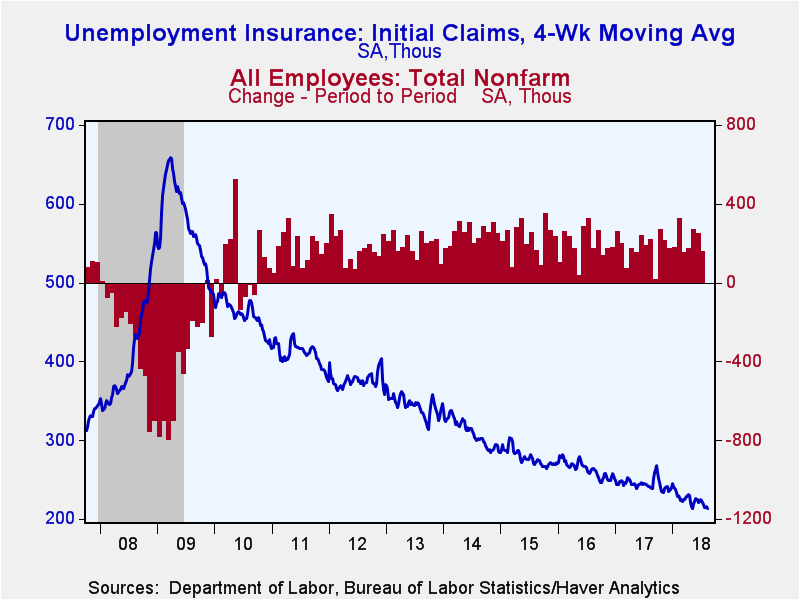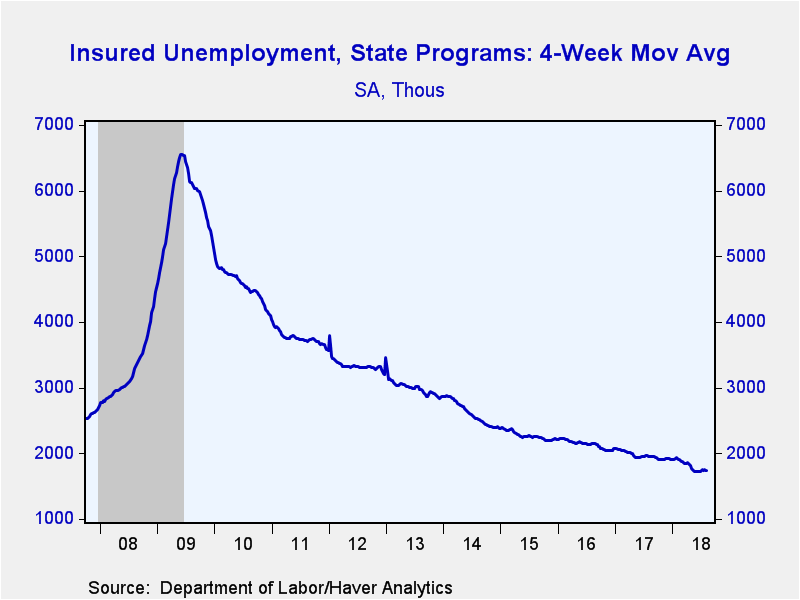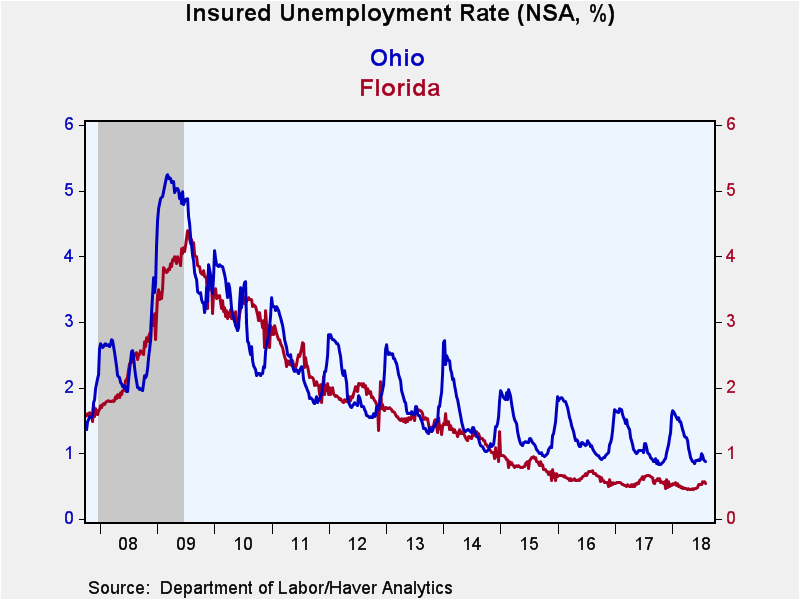 Global| Aug 23 2018
Global| Aug 23 2018U.S. Initial Unemployment Insurance Claims Ease
by:Tom Moeller
|in:Economy in Brief
Summary
The job market remains firm. Initial claims for unemployment insurance fell to 210,000 during the week ended August 18 from an unrevised 212,000 the week earlier. It was the lowest reading in five weeks. The Action Economics Forecast [...]
The job market remains firm. Initial claims for unemployment insurance fell to 210,000 during the week ended August 18 from an unrevised 212,000 the week earlier. It was the lowest reading in five weeks. The Action Economics Forecast Survey expected 215,000 initial claims. The four-week moving average edged lower to 213,750.
The latest initial claims figure covers the survey period for August nonfarm payrolls and there was a decline of 7,000 (-3.2%) from the July period. During the last ten years, there has been a 75% correlation between the level of claims and the m/m change in nonfarm payrolls.
In the week ending August 11, continuing claims for unemployment insurance eased to 1.727 million from 1.729 million, revised from 1.721 million. The four-week moving average of claimants fell to 1.736 million, the lowest level since late-June.
The insured rate of unemployment held at its record low of 1.2%, where it's been since early-May.
Insured rates of unemployment vary widely by state. During the week ended August 4, the lowest rates were in South Dakota (0.26%), Nebraska (0.43%), Indiana (0.45%), North Carolina (0.49%) and North Dakota (0.49%). The highest rates were in New Jersey (2.47%), Connecticut (2.24%), Pennsylvania (2.03%), Alaska (1.88%) and California (1.85%). Amongst other large states, the rate was 1.55% in Massachusetts, 1.47% in New York, 1.02% in Texas, 0.88% in Ohio and 0.54% in Florida. These state data are not seasonally adjusted.
Data on weekly unemployment insurance are contained in Haver's WEEKLY database, and they are summarized monthly in USECON. Data for individual states are in REGIONW. The expectations figure is from the Action Economics Forecast Survey, carried in the AS1REPNA database.
Stark Decline in Labor Force Participation for Men 25-54 from the Federal Reserve Bank of Kansas City is available here.
| Unemployment Insurance (SA, 000s) | 08/18/18 | 08/11/18 | 08/04/18 | Y/Y % | 2017 | 2016 | 2015 |
|---|---|---|---|---|---|---|---|
| Initial Claims | 210 | 212 | 214 | -11.4 | 245 | 263 | 278 |
| Continuing Claims | -- | 1,727 | 1,729 | -11.4 | 1,961 | 2,136 | 2,267 |
| Insured Unemployment Rate (%) | -- | 1.2 | 1.2 |
1.4 |
1.4 | 1.6 | 1.7 |
Tom Moeller
AuthorMore in Author Profile »Prior to joining Haver Analytics in 2000, Mr. Moeller worked as the Economist at Chancellor Capital Management from 1985 to 1999. There, he developed comprehensive economic forecasts and interpreted economic data for equity and fixed income portfolio managers. Also at Chancellor, Mr. Moeller worked as an equity analyst and was responsible for researching and rating companies in the economically sensitive automobile and housing industries for investment in Chancellor’s equity portfolio. Prior to joining Chancellor, Mr. Moeller was an Economist at Citibank from 1979 to 1984. He also analyzed pricing behavior in the metals industry for the Council on Wage and Price Stability in Washington, D.C. In 1999, Mr. Moeller received the award for most accurate forecast from the Forecasters' Club of New York. From 1990 to 1992 he was President of the New York Association for Business Economists. Mr. Moeller earned an M.B.A. in Finance from Fordham University, where he graduated in 1987. He holds a Bachelor of Arts in Economics from George Washington University.










